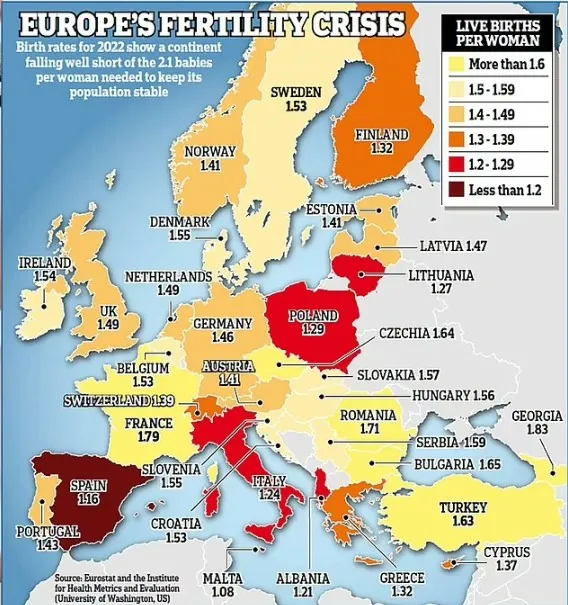Europe is dying out at an accelerating rate. The Mail Online has recently published a map showing the alarmingly low fertility rate on the old continent for the year 2022: 1.55 children per woman in Slovenia, 1.29 in Poland, 1.32 in Greece, 1.16 in Spain and even 1.08 in Malta! Even in (European?) Turkey, the fertility rate did not exceed 1.63 children per woman that year.
European countries have an alarmingly low birth rate. In none of the countries does the birth rate reach 2.1 children per woman, which is essential for the natural replenishment of the population in society.
This is a pressing problem that should concern political leaders, local Christian church leaders and social scientists, as well as reproductive health specialists.
“Without children and young people, the country loses its desire for the future”
However, no one has found a solution to these problems yet. This year, Pope Francis also addressed the issue in question: “The first indicator of hope for a nation is the number of births. Without children and young people, a country loses the desire for the future.”
Thousands of schools in Italy have closed due to lack of children
Pope Francis made the remarks due to the news that thousands of primary schools in Italy have been forced to close due to a lack of children. The Italian Prime Minister, Giorgia Meloni, has also started to actively address the problem. She wants to increase the number of births to half a million per year within a decade (last year, there were only 379,300 births). Meanwhile, the problems are even worse in another Catholic country – Spain. In Slovenia, the situation is also not great.
The government has abolished the Office for Demography, there are fewer and fewer Slovenians, and more and more foreigners
It is also worth noting that at the end of May this year, Slovenian MEP Romana Tomc highlighted a concern of the European Commission – namely, that Slovenia does not even have an Office for Demography, even though it would actually need a Ministry that would deal exclusively with this pressing issue. The demographic data show that the number of Slovenian citizens is decreasing, while at the same time, the number of foreigners living in Slovenia is increasing. The last census that also asked people about their nationality was carried out in 2002.
Domen Mezeg


